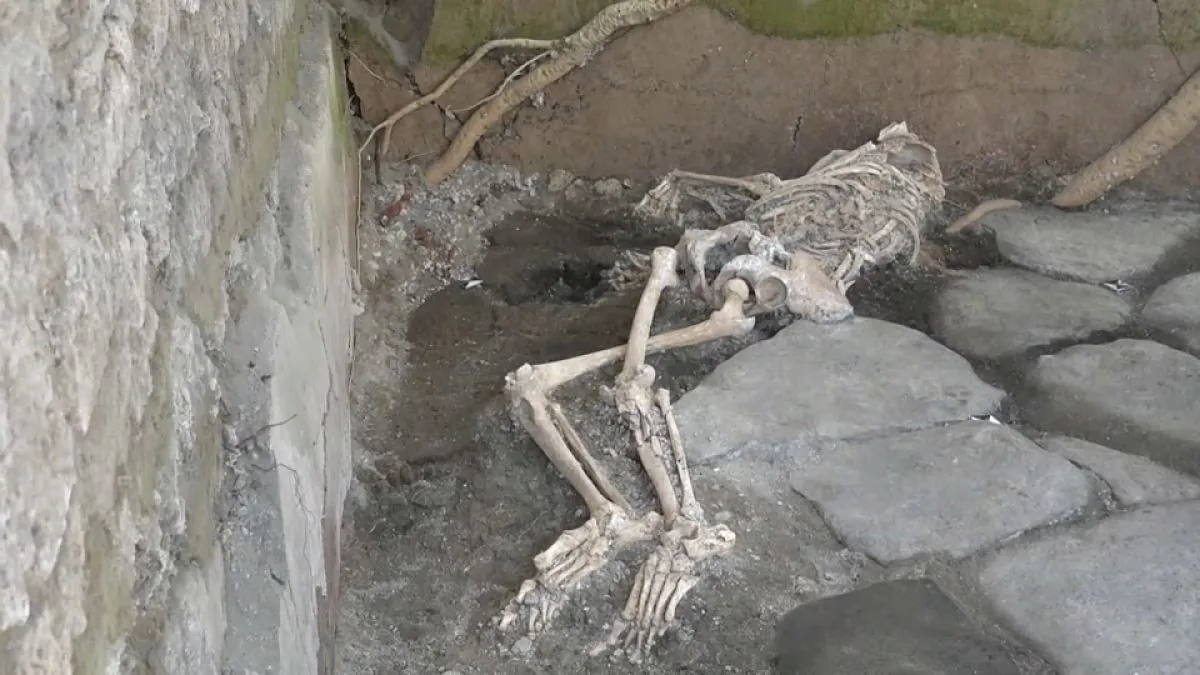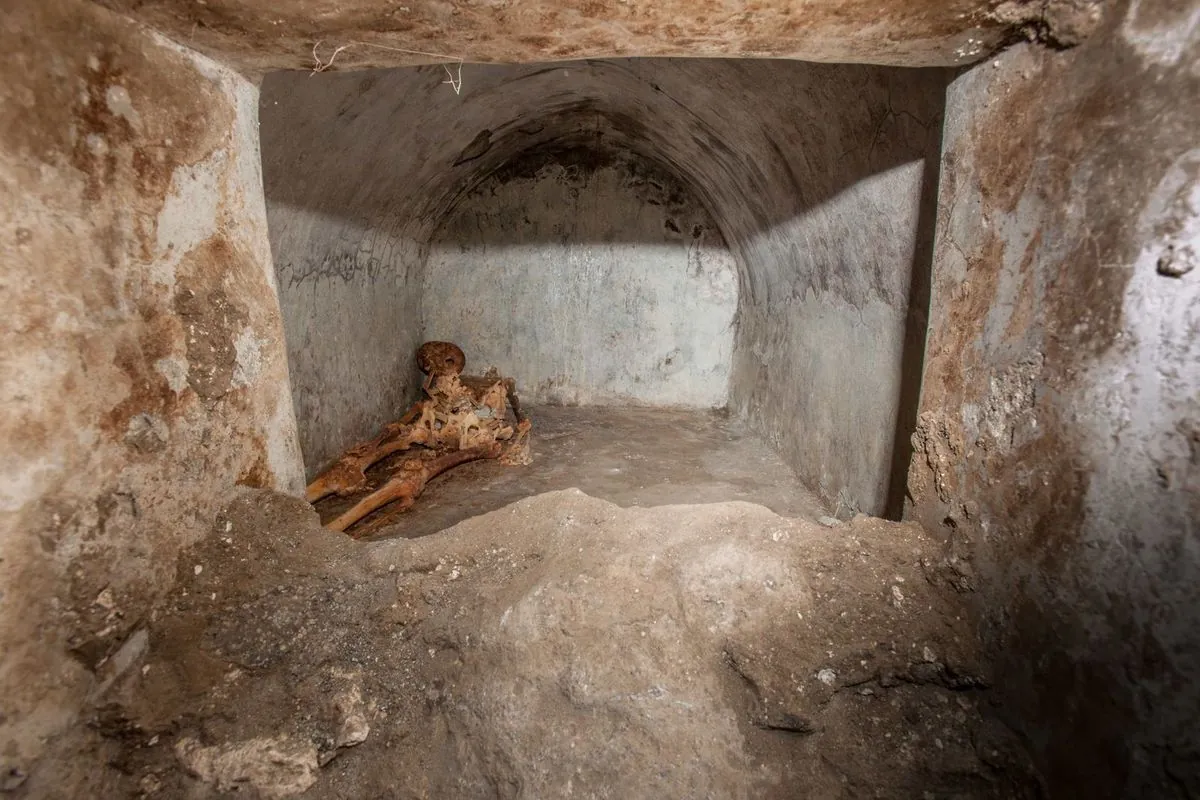Ancient Pompeii Reveals Tragic Final Moments of Two Eruption Victims
Archaeologists uncover remains of man and woman in Pompeii, trapped during Vesuvius eruption. Discovery offers poignant glimpse into victims' last moments, with woman clutching valuable possessions.

In a recent excavation at the ancient Roman city of Pompeii, archaeologists have made a poignant discovery that sheds light on the final moments of two victims of the catastrophic Mount Vesuvius eruption in 79 AD. The skeletal remains of a man and a woman were found in a small room, where they had sought refuge from the volcanic disaster that famously preserved much of the city.
The Archaeological Park of Pompeii reported that the victims were trapped in a cramped space, likely chosen as a temporary shelter from the falling pumice. Tragically, the closed doorways prevented their escape, and they ultimately perished due to the pyroclastic flow that engulfed the city.

The woman, estimated to be between 35 and 45 years old, was found on a bed, clutching a small cache of valuable items. These included gold, silver, and bronze coins, as well as jewelry such as gold and pearl earrings. The man, aged 15 to 20, was discovered in the corner of the room, having died when a wall collapsed during an early stage of the pyroclastic flow.
This discovery offers a unique window into the past, providing insights into the final moments of Pompeii's inhabitants during the eruption. The site has long fascinated researchers and the public alike, with its well-preserved ruins offering a glimpse into ancient Roman life.
"The very nature of this discovery — a man and a woman, trapped in a room during a violent volcanic eruption that would have been completely unfamiliar to them — perhaps gives us a little glimpse as to how absolutely terrifying the moments before their deaths must have been."
The room where the victims were found contained various artifacts, including a wooden bed, stool, chest, and a table with a marble top. These items, along with a toppled bronze candelabrum, paint a vivid picture of the scene during those final moments.
Pompeii's significance extends far beyond this recent discovery. The city, which had a population of about 11,000 to 11,500 at the time of its destruction, has been a source of archaeological treasures for centuries. Excavations began in the mid-18th century, and the site was designated a UNESCO World Heritage site in 1997.
Recent years have seen a flurry of activity at Pompeii, with numerous significant finds. These include a prison bakery, a fresco depicting an ancient precursor to pizza, and a beautifully decorated banquet room. The ongoing excavations continue to provide valuable insights into Roman life and the tragic events of 79 AD.
The preservation of Pompeii under layers of ash and pumice has allowed archaeologists to study the city in remarkable detail. The site spans approximately 64 to 67 hectares, with about 44 hectares excavated to date. It receives around 2.5 million visitors annually, testament to its enduring fascination.
The eruption of Mount Vesuvius was a cataclysmic event, releasing thermal energy estimated to be 100,000 times that of the Hiroshima-Nagasaki bombings. This power not only destroyed the city but also preserved it, creating a time capsule that continues to reveal its secrets nearly two millennia later.
As excavations continue, each discovery at Pompeii adds to our understanding of this ancient tragedy and the lives of those who experienced it. The recent find of these two victims serves as a poignant reminder of the human cost of one of history's most famous natural disasters.


































